I’ve been at this fairy wand fishing thing for over four months now. This year’s peculiar winter, or rather lack of winter — a blessing from the climate change gods of doom — meant rarely a week went by that I wasn’t able to spend time on the water’s edge or at least practice casting in the yard. I caught a few fish. In fact, I’d lay a wager that I caught more fish this winter than any winter prior. I don’t think I’ve fished the months of November though February so intently since I was a teenager, all hot and bothered after flipping through the Bass Pro Shops Annual Fishing Master Catalog, plunging the depths with jig and pig as I eagerly waited for the shallows to warm and sow bass to stage on the flats of Lake Atkins.
With so much time at my disposal (I’m a freelance writer, which is code for professional loafer) along with the agreeable winter, I had a solid grasp on the basics of fly casting by March.
I also learned that there is more to casting a fly rod than 10 o’clock/2 o’clock and rhythm. There’s also leaders and tippet and flies. Oh yes, all of these play a role in how far and how smoothly you can lay a little feather-clustered hook in the water.
My first quandary was leader selection. I bought a few tapered leaders to get started, but the lifespan of said leaders was depressingly short and riddled with knots. And tapered leaders are expensive, at least too expensive for me to go through a new one every other time I picked up the rod. Yes, there were that many knots. Luckily, I found some seasoned fellows that shared their wisdom about leader selection and discovered that a straight leader made of a single diameter tippet material would likely cover all of my warm-water fly fishing needs.
My targeted members of the sunfish family — bass, bluegill and other “bream” — might eat a size 26 Parachute Adams, but they couldn't care less whether that fly was delivered with delicate presentation on a 10-foot leader woven from pixie eyelashes. And they will often turn themselves inside-out to get a shot at a kerplunking size 1 fuchsia popper with peacock feathers tied to a 3-foot leader made of Weed-eater line. Even a five-inch bluegill will take a swipe at the biggest of poppers. But pretty presentations are beyond their level of refinement. They're a rough cut bunch.
Plus, those straight leaders actually throw most flies better.
My collection of flies grew from three poppers to a bass/bluegill/carp-geared assortment of streamers, poppers and some I don’t even know how to categorize. What exactly is a “headstand” and what aquatic morsel does it imitate? But a new concern hit me one sunny afternoon as I made a test run with every fly in the box: There was no “one-size-fits-all” casting style. Every fly felt and flew differently. The unweighted wooly buggers were a cinch to cast and made me look like I knew what I was doing, as I threw effortless casts with distance and tight loops that culminated with a gentle caress of the water’s surface. The headstands and beadhead buggers were a bit more unwieldy, but I could still look fairly competent.
The Clouser minnows scared me.
Perhaps “scared” is a bit strong. I was apprehensive.
When I first tied on a size 4 Clouser, I noted that it was a substantial fly. It doesn’t really fit the definition of a fly. It’s a jig. It hung from my six-weight like those massive rubber-legged bass jigs hung from my baitcasting rods. And then I tried to load the rod and cast it. No era bueno. The Clouser had a mind of its own, and nothing I could do with the fly rod would tame it. It buzzed my head like an irate red wasp on most attempts. I could see lots of potential for a bad experience.

So I hit the interweb and Googled “Clouser casting techniques,” and thats when the chilly fingers of fear tickled my spine. I read stories about Clousers slamming into noggins, or burying themselves into ears, both of which were worrying, but the most terrifying accounts mentioned rod breakage. I could rest up and be fine and dandy after a concussion or an inadvertent piercing, but what if I’m two miles up the creek and my rod breaks? The prospect of such horror spurred me on to more practice.
I’d like to say I’ve mastered the perfect Clouser cast, but it’s more like I’m taking what the Clouser will give me. Sometimes it looks good. Sometimes calling it a cast is playing fast and loose with the word “cast.” But if it’s in the water, I count it as victory. And my first ever smallmouth on the fly didn’t care a whit about the presentation.




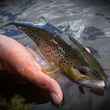
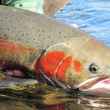

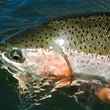




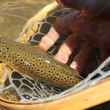




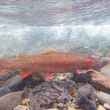




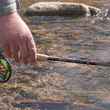







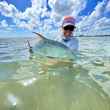

Comments